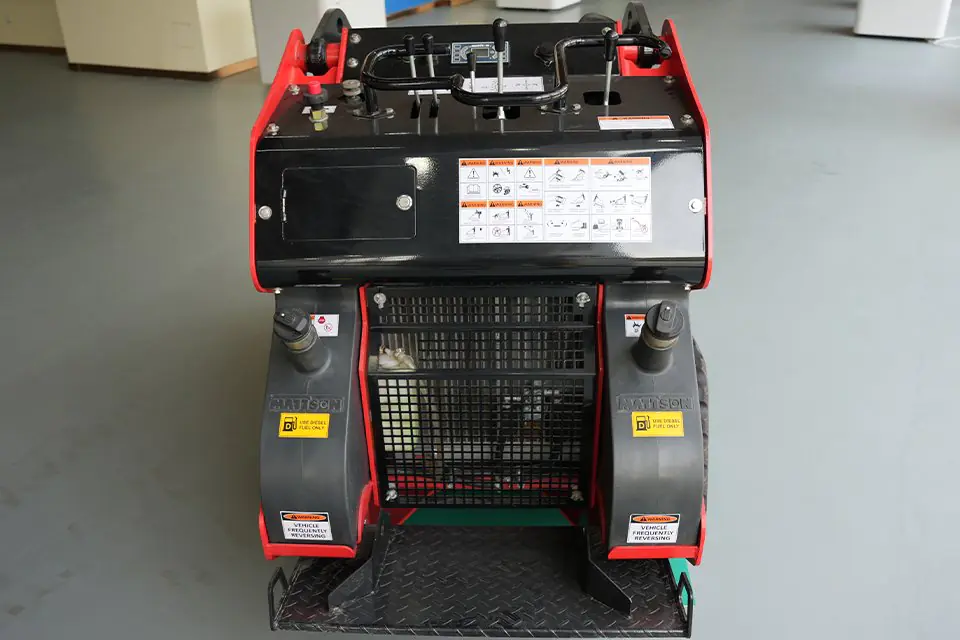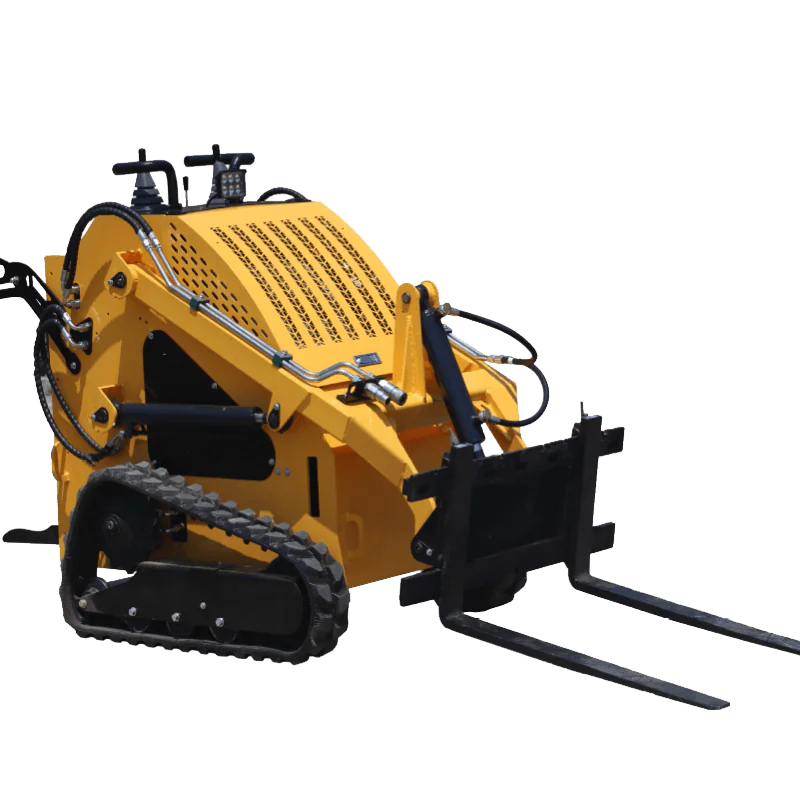Loading a skid steer loader onto a trailer might seem straightforward, but it’s a task that requires careful preparation and attention to detail. Whether you’re transporting your Bobcat skid steer to a new job site or hauling it back after a long day of work, knowing the right way to load and secure your equipment is crucial. This comprehensive guide will walk you through the safest way to load a skid steer onto a trailer, ensuring both your safety and that of others on the road. Keep reading to learn valuable tips and techniques that will make the loading process smooth and stress-free.

What Is a Skid Steer Loader?
A skid steer loader is a versatile piece of heavy equipment commonly used in construction, landscaping, and agriculture. Equipped with lift arms and various attachments like buckets, forks, and backhoes, these machines can perform a wide range of tasks—from digging trenches to lifting heavy materials.
Skid steers are compact, maneuverable, and powerful, making them an essential tool on many job sites. Brands like Bobcat Company have become synonymous with skid steer loaders, offering durable and reliable machines that operators trust.
Why Properly Loading a Skid Steer Onto a Trailer Is Important
Transporting a skid steer involves more than just driving it onto a trailer. Improper loading can lead to:
- Equipment damage
- Accidents or injuries
- Legal issues due to unsafe transportation
Operators need to understand the correct procedures to safely load and transport their skid steers. This ensures the vehicle remains stable during transit and arrives at the job site ready for use.
Choosing the Right Trailer for Your Skid Steer
Before you even think about loading your skid steer, you need the right trailer. Not all trailers are created equal, and using the wrong one can be dangerous.
Factors to Consider
- Trailer Capacity: Make sure the trailer is rated to handle the weight of your skid steer and any attachments.
- Trailer Type: Gooseneck and flatbed trailers are popular choices for hauling heavy equipment.
- Axles: Verify that the axle ratings are sufficient for the load.
- Hitch Compatibility: Ensure the trailer hitch matches your towing vehicle.

For instance, if you’re transporting a heavier machine like our 1.8 Ton Mini Excavator, you’ll need a trailer that can handle the extra weight.
Preparing Your Skid Steer Loader for Transport
Preparation is key to a smooth loading process. Here’s how to get your skid steer ready:
Inspect the Equipment
- Check the Engine: Ensure it’s running smoothly with no leaks.
- Examine the Tires or Tracks: Look for any damage or excessive wear.
- Securely Attach Components: Tighten any loose parts, especially the bucket or other attachments.
Remove or Secure Attachments
If possible, remove attachments like forks or backhoes to reduce weight and prevent them from moving during transport. If they can’t be removed, make sure they’re securely fastened.
Positioning the Trailer for Loading
Correct trailer positioning makes loading safer and easier.
Level Ground
- Park the trailer on level ground to prevent the skid steer from rolling or sliding.
- Avoid loading on an incline or uphill whenever possible.
Secure the Trailer
- Engage the trailer’s brakes.
- Chock the wheels to prevent movement.

How to Use Ramps to Load a Skid Steer Onto the Trailer Safely
Using ramps is a common method for loading a skid steer.
Selecting the Right Ramps
- Weight Rating: Ramps must support the combined weight of the skid steer and attachments.
- Length and Angle: Longer ramps reduce the loading angle, making it safer.
Setting Up the Ramps
- Place the ramps securely on the back of the trailer.
- Ensure there’s no gap between the ramp and the trailer bed.
Step-by-Step Guide to Loading a Skid Steer Onto a Trailer
Follow these steps for safely loading your skid steer:
Approach Slowly
- Line up the skid steer with the ramps.
- Approach at a slow, steady pace.
Ascend the Ramps
- Drive straight up the ramps without turning.
- Maintain a consistent speed to avoid stalling or jerking.
Position on the Trailer
- Once on the trailer, position the skid steer over the axles.
- This helps distribute the weight evenly.
Lower Attachments
-
- Lower any attachments, like the bucket, to lower the center of gravity.
Shut Down the Engine
-
- Turn off the engine and remove the key.

Securing the Skid Steer for Transport
Properly securing the skid steer prevents it from moving during transit.
Using Tie-Downs
- Use chains or heavy-duty straps rated for the weight.
- Attach to designated tie-down points on the machine.
Tie-Down Points
- Front: Secure around the axle or frame.
- Rear: Attach to sturdy points on the loader.
Tension and Checks
- Tighten all tie-downs securely.
- Double-check all connections before departing.
Tips for Safely Transporting Your Skid Steer
- Weight Distribution: Ensure about 60% of the weight is towards the front of the trailer to maintain proper tongue weight.
- Avoid Overloading: Do not exceed the trailer’s weight capacity.
- Regular Inspections: Stop periodically to check the tie-downs.
Common Mistakes and How to Avoid Them
Loading Too Fast
- Issue: Increases the risk of accidents.
- Solution: Always load at a slow, controlled pace.
Improper Weight Distribution
- Issue: Can cause the trailer to sway.
- Solution: Position the skid steer correctly over the axles.
Using Worn Tie-Downs
- Issue: Straps or chains may break.
- Solution: Inspect tie-downs for wear and replace if necessary.
Alternative Loading Methods
If ramps aren’t available, consider these options:
Using a Dovetail Trailer
- Features a sloped back that makes loading easier without ramps.
Hiring a Professional
- For complex loads or if you’re unsure, hiring professionals can ensure safety.
Safety Precautions to Keep in Mind
- Wear Protective Gear: Helmets, gloves, and safety boots.
- Clear the Area: Ensure no one is behind or under the skid steer during loading.
- Follow Manufacturer Guidelines: Refer to the owner’s manual for specific instructions.

Frequently Asked Questions
Should I Load the Skid Steer Facing Forward or Backward?
Facing Forward: Commonly recommended for better control.
Load It Backwards: May improve weight distribution on certain trailers.
Can I Transport a Skid Steer Without a Trailer?
Flatbed Trucks: Possible if the truck can handle the weight.
Legal Considerations: Always check local regulations.
How Much Tongue Weight Should I Aim For?
General Rule: Tongue weight should be about 10-15% of the total trailer weight.
Importance: Ensures the trailer tows pretty well without swaying.
Conclusion
Loading a skid steer onto a trailer doesn’t have to be a daunting task. By choosing the right trailer, preparing your equipment, and following safe loading practices, you can safely transport your skid steer to any location. Remember to:
- Verify all equipment and tie-downs before departure.
- Proceeding with caution can prevent accidents.
- Customize your approach based on the specific skid steer and trailer.
For more heavy equipment needs, consider our 1.3 Ton/3000 Lb Mini Excavator for versatile performance on any jobsite.
Key Takeaways
- Choose the Right Trailer: It must be rated for your skid steer’s weight.
- Prepare Your Equipment: Inspect and secure all components.
- Use Proper Loading Techniques: Align, ascend slowly, and position correctly.
- Secure the Load: Use appropriate tie-downs on designated points.
- Follow Safety Guidelines: Wear protective gear and clear the area.
By following this guide, you’ll ensure that your skid steer arrives at the next job site safely and you’re ready to get back to work without any hitches.











